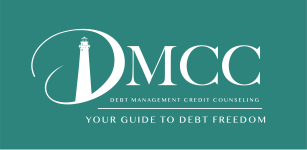A budget, or spending plan, is the best way to get control of spending and review if your money is used the way that will benefit you best. Managing money is a skill, and like most skills it requires a bit of discipline and lots of practice.
Step 1: Journalize Your Spending
Using a spending diary can help identify areas where you can reduce unnecessary expenses. Logging your spending trends, such as the daily coffee and donut, the daily newspaper, or even the soda for lunch, can be a rude awakening. The coffee and donut can cost you $1,092 a year (assuming you are spending $3 for a medium coffee and a donut…$3 x 7 days a week = $21, $21 x 52 weeks per year = $1,092).
Step 2: Estimate Your Monthly Take-home Income and Expenditures
Gather all your bills including credit card statements, receipts for groceries, gas or anything else that you buy with cash. You should also have your checkbook register available to review additional expenditures. Write down all of your expenses, broken down into categories for (1) fixed expenses like the house payment, credit card payments and car payments; (2) flexible expenses that vary each month, including the phone and electric bills; and (3) discretionary expenses, such as a gift for someone’s birthday or a scheduled outing. Add up your total monthly expenses and total monthly income. Then subtract the total expenses from the total income. The difference is available for you to use as you desire. If the total difference is a negative amount, then you are spending more than you are earning. In this case you should take immediate action to adjust your lifestyle and expenses so you do not continue to accumulate more debt.
Step 3: Plan
It is comforting and almost second nature to think that you will have more money next year. But it will not happen without some serious commitment. Before making any promises and thinking that your financial situation will change automatically, plan for change. Sit down and make some goals. Goals give you direction to realize your dreams. Establishing goals for the short, mid and long term will help you achieve financial security. Short-term goals can be met within a year, mid-term goals would probably take a little longer, perhaps five years, and long-term goals may take ten to fifteen years to achieve. Be descriptive and define the means to the end. If your goals are specific enough, you will be motivated to cut down on your spending to reach those goals. For example, you can use this tactic:
Goal(s) _____________________________
Estimated Cost _______________________
Target Date__________________________
Monthly Savings ______________________
Step 4: Reduce Your Spending
The hardest part of the budgeting process is over; now comes the commitment. Although it may seem impossible to cut your ties with some of your expenditures, you will soon become comfortable with your new spending plan. Cutting expenses is perhaps the biggest challenge people face. This can be because they are already just meeting their financial responsibilities. However, it can be accomplished. There are a few suggestions to consider:
• Pay with cash instead of writing checks or swiping your credit card. It is so easy to just write out a check or to pay with plastic. The after effects are not felt until it is too late.
• Withdraw a set amount of money every week. If you only have $50 to spend in one week, you will monitor and perhaps be a little more frugal when it comes to buying something you do not need.
• Do not create more debt. If you cannot pay for it up front, do not buy it. Should you come across something you think you cannot live without, step back and reconsider. Do you really need the extra stress of one more bill? How is making that purchase going to affect your planned goals? Even when you know you deserve something, put your wants on hold until you have the cash to pay for them up front.
• Remember your weakness. If you like to shop for clothes on a weekly basis, try to avoid going to the mall or places of temptation. If you find yourself somewhere and you want to shop, only spend the allotted amount you budgeted for.
• Rethink your shopping style. Comparison shop! Plan your purchases before you buy. Make a list of things you need before you go into the grocery store – and stay within the list.
Step 5: Pay Yourself first
The easiest way to save is to think of this category as an expense. Try not to wait until the end of the month to see if you will have money left over to put into savings. Set up a separatmoney grow. It is very important to routinely compare your budget to how much you are actually spending. Once you become comfortable with the process you will be able to alter your categories and perhaps put a little more into savings.
DMCC is a 501 (c)3 nonprofit organization committed to educating consumers on financial issues and providing personal assistance to consumers who have become overextended with debt. Education is provided free of charge to consumers, as well as personal counseling to identify the best options for the repayment of their debt. To speak to a certified credit counselor, call toll-free 866-618-3328 or email contact@dmcconline.org.
